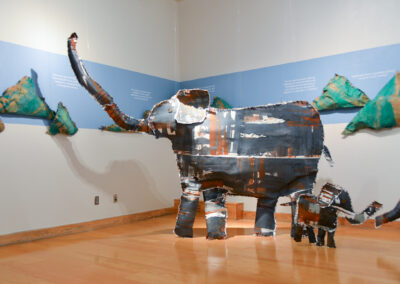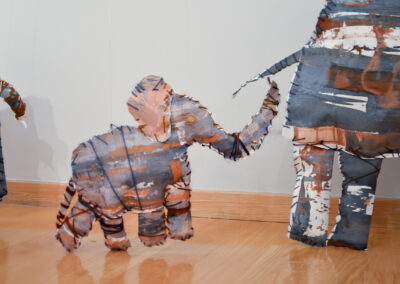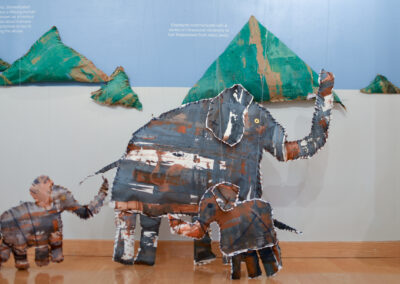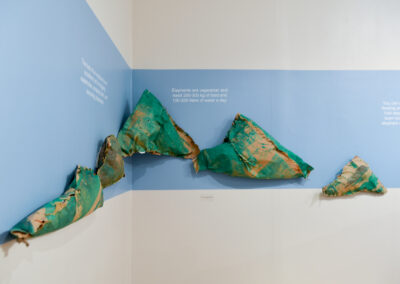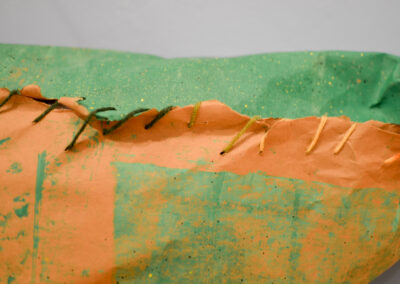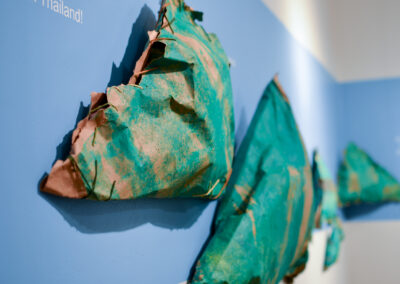The Elephantine in the Anthropocene will explore historic hunting practices in African countries as linked to the ivory trade in Asia, and how modern conservation is working to save the species.
This exhibition is made possible, in part, by the generous sponsorship by Dennis and Marcia Quinn.
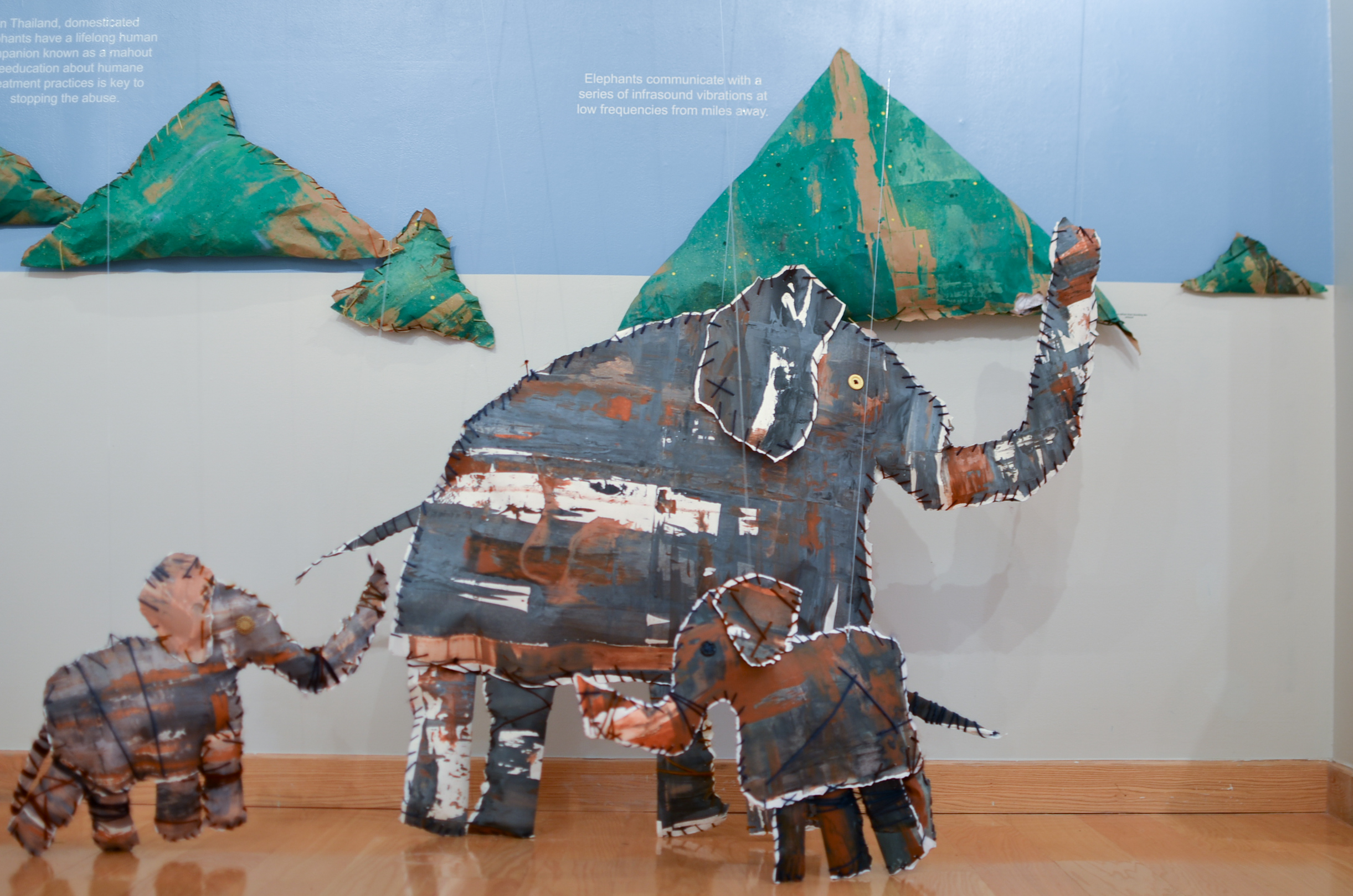
Artist statement
The anthropogenic impact of environmental degradation, climate change, habitat conversion, and human-animal conflict is causing a rapid decline of biodiversity on planet Earth. In Africa, an elephant is killed every 15 minutes for their tusks; brutal murders that disrupt the matriarchal structure of this umbrella species, causing top-down negative effects on local ecosystems. Attending to ivory-poaching and wildlife conflict is a delicate issue, contingent on employing cultural sensitivity and interdisciplinary collaboration as solutions to stop this ecological crisis. While humans are the invasive species, they can also be the answer to the problem. Efforts to stop poaching include the re-education of former poachers and re-purposing of weapons of war for protection of this charismatic megafauna and conservation projects that necessitate community involvement and invoke empowerment through sustainable development, eco-tourism, and environmentally friendly campaigns. Around the world, schools, education centers, celebrity ambassadors, non-profit campaigns, and activists are working to raise awareness about elephant conservation and stifle the demand for ivory and consumption of negative tourism practices, inciting an ethic of care towards this critically endangered species. Humans are but one species on the planet, and we must work together to exhibit environmental stewardship during our lifetimes.
About the artist
Kelsey Merreck Wagner’s research interests include Appalachian studies, environmental justice, community-based natural resource management, conservation, biosemiotics, visual communication, Southeast Asian studies, Elephas maximus and Loxodonta africana. Her exhibition at the TCVA reflects her research that explores how local, expertise, sustainable development, and community-based natural resource management can mitigate elephant population decline, making the world better, not just for elephants but also the humans who live with them. Kelsey received her Bachelor of Arts in studio art from Western Michigan University in 2013 and her Master of Arts in Appalachian Studies (Sustainability) from Appalachian State University in 2018. She has served as the Appalachian Cultural Heritage Curator at Florence Thomas Art School in West Jefferson, NC, as project manager during the Black Mountain College Semester 2018 at Appalachian State University and curatorial assistant at the Turchin Center for the Visual Arts in Boone, NC.


